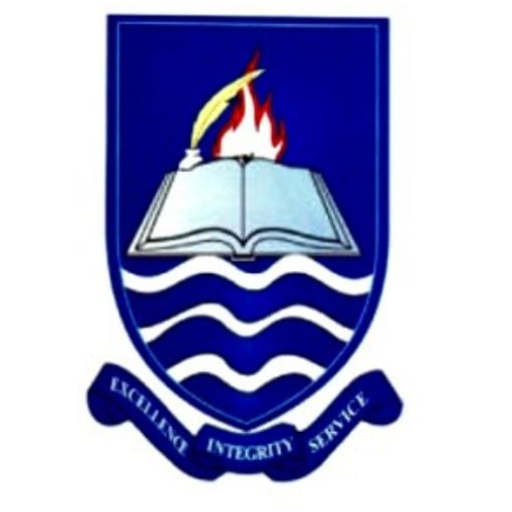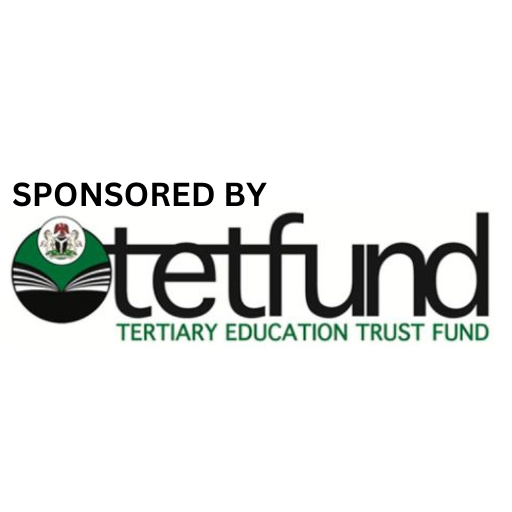Developing creative-hands among varied cognitive style upper-basic 3 students in basic science using creative exploration in Gboko.
DOI:
https://doi.org/10.63561/fnas-jmse.v6i3.899Keywords:
Development of Creative-Hands, Varied Cognitive Style, Upper-Basic III Students, Basic Science, Creative ExplorationAbstract
Development of creative-hands among varied cognitive style upper-basic III students in basic science using creative exploration in Gboko was studied using quasi-experimental research design (pre-test post-test nonequivalent control group). Two research questions and two hypotheses guided the study. A sample size of 70 (39 males and 31 females) students was drawn out of a population of 1 823 (995 males and 828 female) upper-basic III science students using a multi-stage sampling from 24 government grant-aided schools was used for the study. The Creative Hand Design Test (CHDT) which was used for data collection was validated by five experts. It was trial-tested by a test retest; test scores obtained were computed by Pearson Product Moment Correlation (PPMC) which yielded a reliability value of 0.997. Mean and standard deviation were used to answer research questions and Analysis of Covariance (ANCOVA) was used to test the null hypotheses at 0.05 α-level. The results show a significant difference in the students’ creative-hands development when taught Basic Science using creative exploration and the students taught using expository teaching with mean gain of 16.05 for CE, F (1,67) = 38.437; ρ = 0.000 < 0.05. The result also shows no significant difference in the students’ creative-hands development based on different cognitive styles as students were taught using creative exploration F (1, 31) = 0.066; ρ = 0.936 > 0.05. The study recommends, among others, that creative exploration be used for teaching science at basic schools.
References
Adams, P. & Lee, G. (2020). Developing creative-hands: a study on the effectiveness of sculpture activities in enhancing manual dexterity and creativity. High School Journal of Art Education, 22(3), 45-60.
Agogo, P.O. & Otor, E.O., (2019). Methods and Resources in Science Teaching in Nigeria. Optimism Publishers, p. 10.
Agogo, P.O. (2018). Challenges of teacher education in Nigeria and the way forward. 9th inaugural lecture at Apa College of Education, Aidogodo held on 7th March.
Arce, D. G. & Ferguson, K. E. (2013). The labour market and corporate social responsibility: theory and evidence. Journal of Labor Research, 34(3), 276-294.
Archie, T. L. (2019). Innovative approaches to enhancing student engagement in higher education. Journal of Educational Innovation, 10(1), 45-59.
Ayua, G. A. & Agbidye, A. (2020). Effect of science-technology-society strategy on entrepreneurial creativity among upper-basic school students. Journal of Science Technology and Education, 4(9), 105-113. Retrieved from http://nsukjste.com/articles/search
Ayua, G. A. & Eriba, J. O. (2023). Adapting creative-teaching of Basic Science in special needs education. In J. A. Ademokoya, N. Akuma, E. O. Idiodi& S. O. A. Obih (Eds.), Special Needs Education from the Lens of Interdisciplinary Dialogue (PP 314 - 325). Owerri: Citihall International.
Ayua, G. A. (2018). Scientific attitudes and values for societal renewal: Critical examination of Gardner’s position and its implication of on Nigeria and its education. Umaru Musa Yaradua University Journal of Education, 8(1), 314-319.
Ayua, G. A. (2019). Creative teaching of science in the 21st century. In P. O. Agogo & E. E. Otor (Eds.), Methods and Resources in Science Teaching in Nigeria (PP 174-192). Optimism Academic Publishers.
Beatty, R. (2018). Why are some people more creative than others? https://www.whyarepeoplecreativethanothers DOI: https://doi.org/10.64628/AAI.gsa6mw44f
Bhattacharya, H. (2023). Creative education. The Times of India. https://timesofindia.indiatimes.com
Biermeier, J. (2015). Assessing the impact of new technologies on classroom learning. Journal of Educational
Technology Research and Development, 63(4), 537-554.
Bruner, J. S. (1960). Towards a theory of instruction. Cambridge: Harvard University.
Danjuma, G. S. (2015). Effects of collaborative and competitive learning strategies on upper-basic two students’
interest and achievement in basic science. PhD thesis, Department of Science Education, University of
Nigeria, Nsukka.
Davis, R., & Thompson, M. (2021). Gender differences in handicraft skills: a study on creative development in
middle school students. Journal of Educational Research and Development, 31(4), 89-105.
Emaikwu, S. O. (2013). Fundamentals of research methods and statistics. Makurdi, Nigeria: Selfers Academic
Press Ltd.
Federal Republic of Nigeria - FRN. (2013). National policy on education. Yaba, Lagos: Nigeria Educational
Research and Development Council (NERDC) Printing Press.
Foster, E., & Campbell, A. (2020). Gender differences in creative hand skills: an examination of high school students. Journal of Educational Psychology, 34(2), 123-145.
Global Innovation Index. (2023). Global Innovation Index 2023: Who Will Finance Innovation? https://www.globalinnovationindex.org
Gomez, L., & Harris, D. (2022). The role of artistic practice in developing fine motor skills and creative expression in adolescents. Australian Journal of Education, 37(4), 210-235.
Grebenev, I. B., Lozovskaya, L. B. & Morozova, E. O. (2014). Methodology of determining student’s cognitive styles and its application for teaching physics. Springerplus. Published online 2014 Aug 20. doi: 10.1186/2193-1801-3-449. DOI: https://doi.org/10.1186/2193-1801-3-449
Jobberman (2021). Creative Sector Skills Gap Report. https://www.nexford.edu
Kelly, S. (2020). Relationship between creative-hands development and creative exploration in preschool children in New York, USA. Journal of Creative Development, 10(1), 1-15.
Lee, S., & Wang, M. (2021). Enhancing creativity and dexterity in preschool children through handicraft activities. Early Childhood Education Journal, 45(3), 89-102.
Lewin, K. (2019). Cognitive style. Applied and social sciences magazines. https://www.encyclopedia.com
Lopez, S., & Martin, B. (2021). Handicraft Skills and Gender: A Comparative Study in Middle School Students. Journal of Creative Education, 45(3), 112-130.
Manalu, J. B., Sitohang, P., Heriwati, N., & Turnip, H. (2022). Prosiding pendidikan dasar pengembangan perangkat pembelajaran kurikulum merdeka belajar. Mahesa Centre Research, 1(1), 80–86. Retrieved from https://doi.org/10.34007/ppd.v1i1.174.
Martin, A., & Roberts, K. (2022). Creative-hands and gender: assessing manual dexterity in elementary school children. Journal of Early Childhood Development, 40(2), 112-130.
Mellander, C., & King, R. (2015). Understanding the role of creativity in urban and regional development. Journal of Economic Geography, 15(2), 239-258.
Milne, R., Ian, H. and Cremin, H. & Teresa, G. (2016). Creative Exploration. In: Davies, Dan and McGregor, Deb eds. Teaching Science Creatively Second Edition. Learning to teach in the primary school series. London: Routledge, pp. 77–90.
Nguyen, J., & Turner, D. (2022). The role of gender in the development of manual dexterity and creative expression. Australian Journal of Education, 38(4), 210-235.
Pantiwati, Y., Chamisijatin, L., Zaenab, S., & Aldya, R. F. (2023). Characteristics of learning assessment towards implementation of merdeka learning curriculum. Jurnal Penelitian Dan Pengkajian Ilmu Pendidikan: ESaintika, 7(1), 115–128. Retrieved from https://doi.org/10.36312/esaintika.v7i1.1125 DOI: https://doi.org/10.36312/esaintika.v7i1.1125
Peng, Y. (2019). Effects of creativity instruction in science on creative thinking and science achievement in Chinese students UNLV Theses, Dissertations, Professional Papers, and Capstones. 3743. Retrieved from http://dx.doi.org/10.34917/16076284
Sagiru, I. (2015). The relationship between teachers’ psychomotor abilities and students’ skills acquisition in basic science in Gwale Local Government, Kano State, Nigeria. M Ed science education dissertation, Ahmadu Bello University Zaria, Kaduna State, Nigeria.
Smith, O., & Brown, J. (2021). Examining gender differences in creative hand skills development in high school art classes. Journal of Art Education, 22(3), 45-60.
Sternberg, R. J., & Lubart O. L. A. (1995). Intelligence and creativity. In R. J. Sternberg (Ed.), Handbook of intelligence (611-630). New York, NY: Cambridge University Press. DOI: https://doi.org/10.1017/CBO9780511807947.028
Terhemba, W. K. (2022). Effect of creative teaching on creative and critical thinking among upper-basic school science students with different academic abilities. An undergraduate project submitted to the Department of Science and Mathematics Education, Benue State University Makurdi, Nigeria.
United Nations Development Programme (UNDP, 2023). Human Development Report 2023: Beyond income, beyond averages, beyond today: Inequalities in human development in the 21st century. Retrieved from UNDP
United Nations Educational, Scientific and Cultural Organisation (UNESCO, 2016). Gender and Education for all: The leaf for quality. Paris: UNESCO.
United Nations Industrial Development Organization (UNIDO, 2016). The Role Technology and Sustainable Industrial Development. https://www.unido.org
United Nations Industrial Development Organization, (UNIDO, 2016). Industrialisation and development in Nigeria: Challenges and opportunities. United Nations Industrial Development Organisation Report Print.
Valarie, D. (2023). Examining the Role of Artificial Intelligence in Personalized Learning. Educational Research Review, 18(4), 285-298.
White, K., & Green, T. (2023). Impact of visual arts education on creative hand skills in secondary students. Journal of Secondary Education, 29(1), 78-95.
White, K., & Harris, M. (2023). Gender influences on creative hand development in preschool children. Journal of Early Childhood Education, 29(1), 78-95.
Windebank, F. (2020). Why creative education is important. https://rightforeducation.org/2020/05/04/
Wiyanti, A., & Hadi, W. (2023). The effect of the geogebra-based project-based learning (pjbl) model on the creative thinking ability of junior high school students. Prisma Sains: Jurnal Pengkajian Ilmu dan DOI: https://doi.org/10.33394/j-ps.v11i3.7992
Pembelajaran Matematika dan IPA IKIP Mataram, 11(3), 805-815. Retrieved from doi:https://doi.org/10.33394/jps.v11i3.7992
World Economic Forum. (2015). Collaboration is the key to achieve sustainable development goals - Here's why. Retrieved from https://www.weforum.org/agenda/2015/09/collaboration-is-the-key-to-achievesustainable-development-goals-heres-why/







